How much does raw dog food cost?
Some people would like to feed their dogs a raw food diet, but the cost is often a barrier.
Many of the commercial raw dog food brands cost more than $300 per month to feed my 62-pound weimaraner, Remy. He needs roughly 2 pounds of raw food per day.
If you buy your own ingredients for a homemade raw dog food diet, you should be able to spend less, but you may need to stock up while the meat is on sale. It also takes time to cut and portion the meat into meals or “recipes.”
I’m used to feeding my dogs a homemade raw diet, so I thought I’d share some money-saving ideas.
These are geared towards people who are new to raw feeding or are interested in getting started. Please share your own suggestions in the comments if you are already feeding your dog raw. I am always still learning!
This post may contain affiliate links. That Mutt may earn money from the companies mentioned in this post.
Affordable raw dog food – how to save money on raw food for dogs
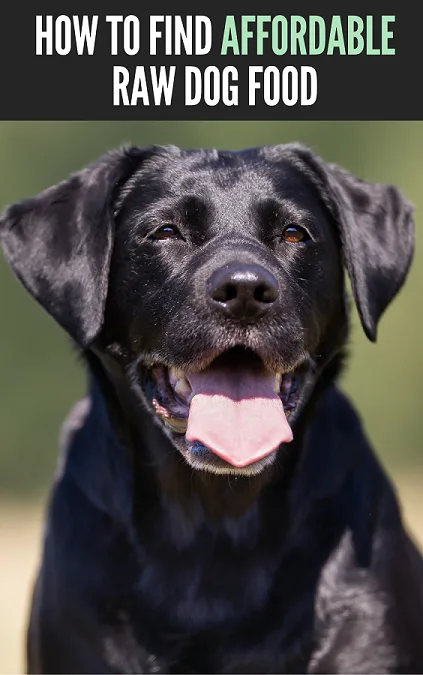
1. Talk to others who feed their dogs raw food.
Find someone in your area who feeds her dogs raw food. Raw feeders generally love to share their experiences with others, and you might be surprised how many raw feeders there actually are.
Put out a Facebook post to see if any of your contacts know someone who feeds raw and what their ideas are for affordable raw dog food.
Many training clubs are associated with the AKC, and some of the members will likely be breeders or owners of working dogs. Chances are, one of them feeds her dogs raw food.
Once you find a few others who feed their dogs raw food, ask them what protein sources they use, where they shop and how they save money.
Want to learn more about raw feeding? Click here to download my guide + 10 easy recipes.
2. Invest in more freezer space for your dog’s raw meat.
I recommend doing at least a four-week raw feeding trial to make sure you are up for raw feeding long term. It’s not for everyone. After that, it’s well worth it to invest in more freezer space so you can buy meat in bulk and store it.
Craigslist is a great place to search for used freezers. I checked my local listings, and there were some freezers listed for around $100-200 ranging from 8 to 17 cubic feet. You may even want to check the classifieds section of this thing called the newspaper.
Larger retail stores may also have reasonably priced freezers, and make sure to ask about price matching.
*Get our three FREE raw dog food recipes now! Click Here
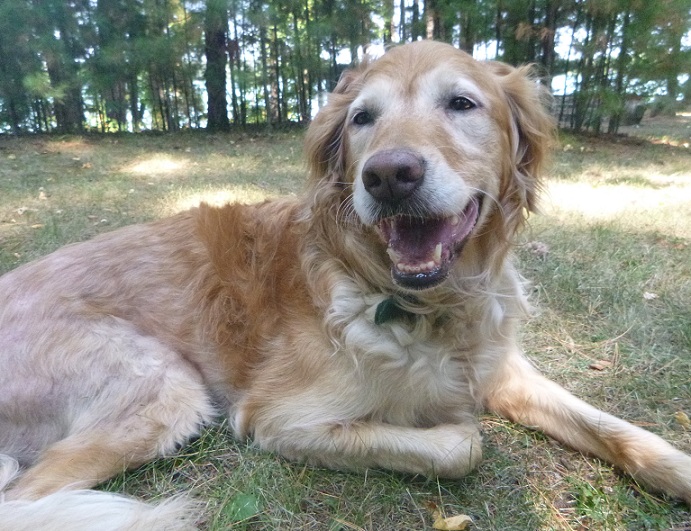
3. Buy large quantities of raw meat while it’s on sale.
Once you know your dog does OK with a certain protein source, take advantage of sales. Buy as much meat as you can reasonably afford and store, especially when it’s on sale.
Turkeys are often on sale after Thanksgiving, one reader mentioned on That Mutt’s Facebook page. Chicken and beef are often on sale after the Fourth of July, another reader suggested.
My husband even noticed how the price of supermarket beef goes down in our area at the start of Christmas break. We assume this is because 15,000 college students leave town and therefore stores have fewer people to buy the meat.
Also, take advantage of specials and sales from commercial raw dog food companies. Sometimes they offer free shipping or 10 or 15% off or buy-one-get-one deals.
For example, you can get 10 pounds of raw food from our sponsor Darwin’s for just $14.99 and free shipping. Click here.
4. Whole carcasses are generally a better deal.
It’s generally cheaper to buy whole chickens or turkeys than it is to buy chicken thighs or chicken breasts or organ meat separately. You can chop or grind the carcass into smaller portions yourself if you want.
5. Take notes and shop around.
When you are first buying your meat, check out all the options in your area. Don’t forget local butcher shops, ethnic markets and places such as Target, Wal-Mart and Costco.
If you visit the same grocery stores regularly, you will see patterns for when the meat is on sale.
Jot down some notes each time you shop so you remember where the best deals were, the quality of the meat, how much you bought and on which day of the week you bought it.
Maybe one store has a sale on chicken every Friday, for example.
Also, just ask the workers when you can get the best deals. Grocery stores often get their shipments in on a regular schedule and sales may follow a pattern.
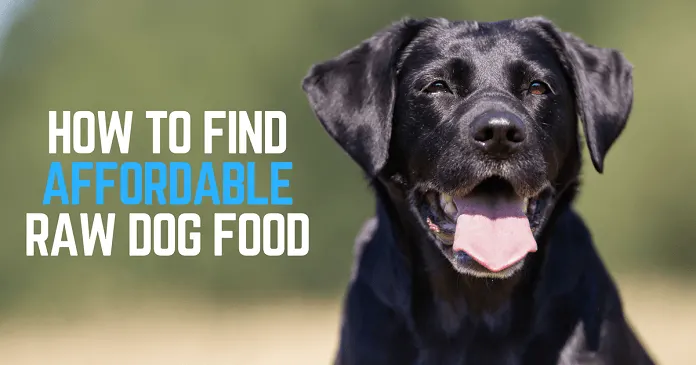
Here are some of the prices I found at my local grocery stores for non-organic meat:
- Whole chicken: $1.85 per pound
- Whole chicken, cut into eight pieces: $1.85 per pound
- Chicken organs (like liver): $2.25-$2.44 per pound
- Whole turkey: $1.29 per pound
- Turkey parts (necks, gizzards, organs): $1.39 per pound
- Pork ribs and neck bones: $1.49 per pound (See my post: is raw pork safe for dogs?)
- Ground beef: $3.79 per pound
6. Get a Costco or Sam’s Club membership.
It’s worth it to pay the roughly $55 annual membership to a warehouse-style “club” such as Costco where you may find some good opportunities to buy meat in bulk for less money overall.
Here are some of the meat prices I saw at Costco – definitely the best deal so far:
- Whole chicken: $0.99 per pound
- Chicken thighs: $0.99 per pound
- Ground beef: $2.99 per pound
7. Keep your dog’s raw meals as simple as possible.
Don’t worry about buying several protein sources or extra supplements for now. Stick to one protein source such as chicken and give your dog a few weeks to adjust.
This will allow you to buy one type of meat in bulk. If you decide to add veggies, introduce them one at a time and keep things simple.
If you want your dog to have more variety, introduce each protein source slowly. Eventually you may be comfortable feeding two or three different types of protein. Use these as “standard” meals for your dog and rotate them based on what you find on sale.
8. Don’t spend a fortune on supplements for your dog.
People get too caught up on feeding their dogs a “balanced” diet. Yes, balance is important for overall health and nutrition. But that doesn’t mean every single meal needs to be perfect.
It’s fine to add vitamins or supplements to your dog’s meals, but don’t worry about that so much when you are first starting out. Even if you give your dog supplements, he may not need them in every single meal.
I wrote an ebook on raw dog food, and it’s a great guide to follow for those just starting out. It also includes 10 easy recipes.
9. Search for local meat delivery options.
If you live in a metro area, search online for local meat-delivery companies (such as Schwan’s). A company in my area delivers regional, natural “meat by the box” right to your door.
The meat is less expensive than it would be in most grocery stores, the quality is just as good or better, and you can buy it in large quantities such as 40-pound cases.
Meat-delivery companies can charge less because they obtain the meat in bulk, and they have less overhead costs compared to supermarkets. Some will even take custom orders.
Using this option in my area, the meat comes to about $1.25 to $1.75 per pound, depending on what you buy.
10. Talk with local butchers about buying raw dog food from them.
Reach out to local butchers and see if they can offer you a deal.
There are just certain animal parts that humans don’t want to eat (pig hearts, anyone?), but these protein sources are healthy and appealing to dogs! Butchers are sometimes willing to sell the “less desired” meat to dog owners for close to nothing, just to get rid of it.
11. Ask hunters for extra meat.
Hunters can be a great source for free meat. Use Craigslist or Facebook to get in touch with hunters in your area. Some have more meat than they know what to do with and will gladly give it away.
You can feed just about any meat to a dog – deer, elk, duck, rabbit, moose, goose, pheasant, you name it! Just freeze the meat first to kill any parasites in the wild game.
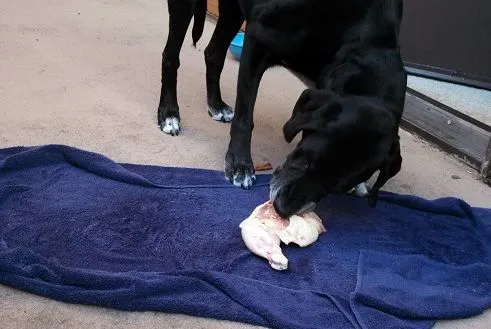
*Get our three FREE raw dog food recipes now! Click Here
12. It’s OK to feed your dog kibble every now and then.
I know some people are going to say you should never mix kibble with raw food.
This is because kibble is generally harder for a dog to digest and raw meat is generally easier for a dog to digest. If you mix them or switch back and forth, some dogs will get upset stomachs.
On the other hand, every dog is different, and some people have success feeding one dry meal per day and one raw meal.
I think that is great. It saves money, and the dog is getting a variety of nutrients. You will have to see what works for your particular dog. I plan to feed Ace dry food every now and then, just to save some money and time.
If your dog gets an upset stomach from a kibble/raw combo, try leaving 12-24 hours between the dry meal and the raw meal so there is more time for him to digest the food.
Your dog might do best with one meal per day, rotating between raw and dry. This will work for some dogs, and not others.
It’s nice to have a bag of high-quality kibble on hand for those days when you are just too tired or stressed to prepare a raw meal. We all eat fast food or frozen dinners every now and then.
What’s the big deal if our dogs eat some processed food as well?
Likewise, if you want to keep some commercial, pre-prepared raw food on hand, that would be OK, too. I plan to. It’s just probably not going to save me any money 🙂
13. Don’t worry about buying organic raw dog food.
Ideally, you may want to feed your dog organic meat and veggie sources. However, if buying organic food for your dog will break your budget, it’s OK to buy conventional meat and veggies.
Heck, you are shopping for your dog at a grocery store for the hoomans! If the food is safe enough for us, it will probably be OK for dogs, too 🙂
Labels can be misleading, and the whole “organic” labeling has certainly helped marketers. For example, beef labeled “organic” does not necessarily come from grass-fed cattle, as some people assume. It most often comes from cattle that ate organic corn.
Personally, I would rather buy grass-fed beef (for the humans and the dog), whether it is organic or not. I also prefer to buy meat and produce from local or regional sources, even if it is not labeled “organic.”
Basically, just buy the highest-quality food you can afford. Don’t fee guilty if you can’t afford organic.
14. You will likely save overall on vet bills
The cost to feed a dog higher-quality food is generally going to be more expensive than processed kibble. However, you will hopefully save money overall on veterinary bills related to itchy skin, ear infections and allergies.
15. Feed your dog a little less.
A raw food diet for dogs is generally richer and more nutrient dense than dry dog food because it is high in protein and low in carbs. When you switch your dog to raw, you can generally feed him less! For more info, see this post on how much raw food to feed my dog.
It’s best to start out by giving him less food than you think he needs, because too much new food too quickly may cause an upset stomach.
You can always increase the amount in a week or two if your dog seems to need more calories. Just wait until his system is handling the new food OK.
The rule of thumb is to eventually feed your dog about 2 percent of his ideal body weight, but that is just a general recommendation. Start with less and adjust as needed.
*Get our three FREE raw dog food recipes now! Click Here
Lindsay Stordahl is the founder of That Mutt. She writes about dog training, dog exercise and feeding a healthy raw diet.

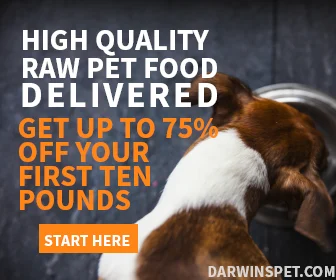
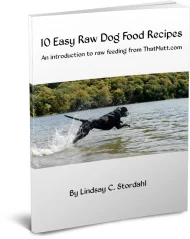
Jeni
Friday 4th of November 2022
I feel so torn. Not on whether raw food is better than kibble, but torn as in, should we even continue to support owning large dogs in the far future? And this is big and crushing for me, because I love my dog soooooo much. So much that it breaks my heart that weekly, if not bi-daily I have to stress between feeding him correctly (species appropriate) vs, deal with the stress of the cost and time, or immediate flair ups when fed conveniently (aka kibble, or even some prepared blended raw -typically not pasture raised & organic). I get it, meat is not cheap.. and nor should it be, right? So it seems like owning a carnivorous animal, especially a large one, is just 1) not realistic to be able to feed properly for the average household income and hectic schedules & 2) nor is it sustainable or earth-responsible (to have to kill hundreds of pounds of other animals to support our one -albeit, amazing in every way possible -pet). Crushing. I never thought this way growing up with pets. It was just normal for them to look a little bloated, have runny eyes and stinky breath with icky teeth. But we've been learing more about their real dietary needs.. and let's face it: if one wants a large dog and wants to feed it species appropriately, be prepared to basically pay in money and time what it equates to have a horse (my guess). It's a far bigger deal than most are aware (including myself, before now). They are the most wonderful companions, they just maybe need to be treated as special as they are: Not heavily breeded, far more spay and neuter, and expectations to pay in money and time what you would to have a horse. These changes can't happen over night, of course, but with more awareness.. in time. My comment is different than what was asked to share, I apologize, but also curious on anyone else's thoughts?
Elaine B
Wednesday 9th of February 2022
Your info is good, thank you, but conventional meat isn’t good for anyone or anything. You may as well feed your dog GMO CORN and add some poison Roundup (glyphosate) to his dish!!
Lindsay Stordahl
Wednesday 9th of February 2022
Not everyone can afford organic, grassfed, etc.
JILL NELSON
Thursday 28th of March 2019
Lynn, if the bones are cooked then they may splinter and get stuck in your pets' throat or puncture their abdominal wall. Raw bones do not splinter and should be given to your pet 1-2 xs weekly for healthy teeth/gums, minerals and calcium and chewing pleasure. Dogs gnaw raw bones into very course pulp and small, digestible pieces which the acid in their stomach breaks down further. Just remember to give your dog a bone based on their size/weight (small gods = small bones, large dogs = large bones).
Lindsay Stordahl
Thursday 28th of March 2019
Thank you for chiming in, Jill.
I feed my dog raw chicken and turkey bones because they are soft and easy for dogs to digest. You shouldn't have to worry about them choking on these types of RAW bones and dogs digest these just fine, even if they swallow large chunks. This is why I recommend raw chicken and turkey bones for beginners.
Others feed some larger raw bones for chewing purposes. There are more risks to these because some dogs might try to swallow large chunks of bone that may be harder to digest due to the density. These bones can also harm a dog's teeth, depending on the dog. You have to know your dog's chewing style. My dog is a hard chewer and for this reason I don't give him larger bones (beef, pork, buffalo, etc.)
Lynn
Tuesday 26th of March 2019
I just always heard that you shouldn't give your dogs certain bones because they can get stuck in their throats or other worse things. what about that?
JILL NELSON
Friday 30th of March 2018
Animals have amazing enzymes in their intestinal tracks that are equipped to defend against bacteria such as salmonella. The real threat of salmonella is to you! So please keep your prep area sanitary and your pets' feeding area clean. I'm fortunate to be able to order "complete meals" (80/10/10 plus veggies!) Suzie's Doggie Delights, a local family-owned raw food supplier that processes their meals on site in order to control the quality. Suzie's cost for raw is very competitive with supermarket pricing (10lbs of complete meal ground whole prey chicken is $21.99 or $2.20/per lb.) When we run short of specific raw menu items and I'll go to Costco or the local supermarket to supplement. Buy in bulk to save!!